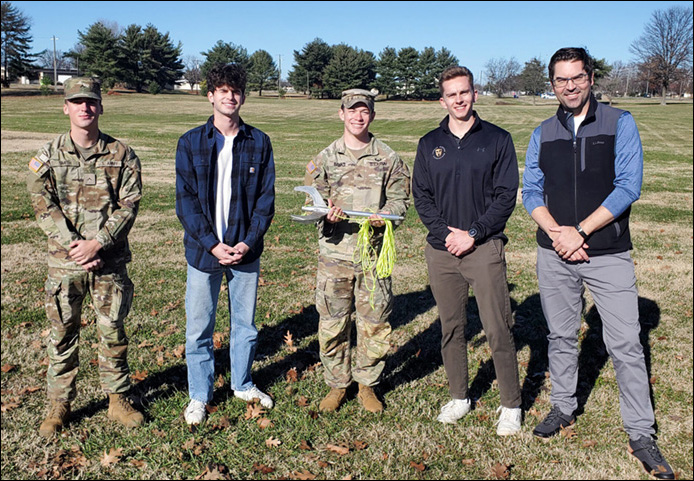A grappling hook or grapnel is a fierce looking object with multiple claws or flukes attached to a rope or cable. It is thrown, dropped, sunk, projected, or fastened directly by hand so at least one claw can catch and hold on to an object. For U.S. Army combat engineers, a grapnel is part of a breacher kit, tools used for a forward advance in warfare. A grapnel can help safely defuse landmines and clear other dangerous obstacles, an important tool for a soldier in an advance position when executing breaching operations in combat.

Three Vanderbilt engineering undergraduates and the U.S. Army’s Fort Campbell (Ky) Eaglewerx Applied Tactical Center recently modified the Army’s current grapneler. Traditionally, a person stands and swings overhand a grappling hook at the end of a rope to launch it. “The problem we observed is that this method makes it very difficult to throw the grappling hook with any precision, which you can imagine is only exacerbated during high stress situations,” said Kevin Galloway, director of Making at the Wond’ry, Vanderbilt’s Innovation Center, and Research Associate Professor of Mechanical Engineering. Galloway advised the students’ project in his ME class, How to Make Almost Anything, and Make it Matter.
After pursuing several unsuccessful concepts, an ‘aha moment’ happened when the team learned soldiers prefer to throw the grapnel like a tomahawk. The team made a simple modification: adding a 16-inch handle welded into the body of the grappling hook.

The handle and extra weight allow soldiers to underhand or overhand throw for greater precision (and while on their knees to minimize exposure to an enemy) or continue the traditional way by swinging the hook at the end of a rope. Soldiers said the slightly heavier grapnel can generate considerable kinetic energy and makes it easier to throw for distance and greater precision, with less effort.
“A soldier in a Sapper squad (a sapper is also known as an elite combat engineer) has an extremely dangerous job. A soldier’s ability to accurately throw a grapnel hook in a time sensitive scenario is crucial for both soldier safety and mission success. Through Vanderbilt’s revamped grapnel design, soldiers are now provided more control over their grapnel hook throws since the design is not isolated to throwing only underhand,” said Eaglewerx Innovation Officer, Captain Nicholas McDonough, 1st Brigade Combat, 101st Airborne Division (Air Assault).
The project that improves soldier safety was especially rewarding for Gavin Stevens, a junior Engineering Science major and a midshipman in Vanderbilt’s Naval ROTC program. “I wanted to make an impact on the people who I might have the honor of serving with one day.” Juniors in computer science, Jake Schorr and Lucas Slater, rounded out the student team.
Specialist David Colas and Private First Class Javier Hernandez of Bravo Company, 326th Brigade Engineer Battalion, 1st Brigade Combat Team, 101st Airborne Division (Air Assault) heartily endorsed the grapnel’s modification. “I love the extension of the grapnel. The ability to pick an option for means of throwing that is more efficient and accurate is insurmountable,” Colas said. Hernandez said the Combat Engineers “will benefit greatly from the [Vanderbilt] design project.”
The prototype is with Allied Trades, the unit or Army personnel who fabricate, repair and modify parts, to produce and add to breacher kits.
The project was funded in part by the Soldier-Inspired Innovation Incubator for Discovering Research-Based Solutions Trans-Institutional Programs (TIPs) and by the DIVE program through the Office of Experiential Learning and Immersion Vanderbilt.